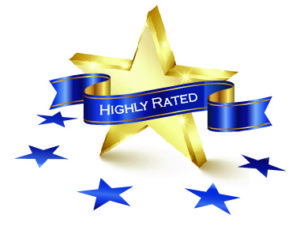
Current as of September 2017
In Spanish | En español
IDEA was originally enacted by Congress in 1975 to ensure that children with disabilities have the opportunity to receive a free appropriate public education, just like other children. The law has been revised many times over the years.
The most recent amendments were passed by Congress in December 2004, with final regulations published in August 2006 (Part B for school-aged children) and in September 2011 (Part C, for babies and toddlers). The law has a long, detailed, and powerful history.
This website is full of information about IDEA. We are pleased to connect you with:
- Summaries of IDEA’s requirements, which shape what school systems do;
- IDEA itself—to read IDEA’s exact words, you can either download a copy of the law and its regulations, or read them here online;
- Guidance on IDEA from the Office of Special Education Programs at the U.S. Department of Education; and
- Training materials on IDEA that you can use to fully inform yourself and others.
Use the links above to find the type of information you’re looking for on IDEA. It’s a great law! Complicated, to be sure, but well worth understanding and implementing.
___________________________________________________
Summaries of IDEA
If you’re looking for summaries of what the law requires (rather than its word-for-word statute or regulations), let us point you to two other major sections of our website:
Services for babies and toddlers to the third birthday (Part C of IDEA)
https://www.parentcenterhub.org/babies/
Services for school-aged children, including preschoolers (Part B of IDEA)
https://www.parentcenterhub.org/schoolage/
Exact Words of IDEA Itself
To read IDEA’s verbatim language can be a big help in understanding why local practices in schools and early childhood settings are as they are. Here is the place to connect with that language. Use the links below to explore the actual words of our nation’s special education law.
Get a Copy of IDEA
Does your desk need a full copy of IDEA or its implementing regulations? Here’s where!
Part C of IDEA: Early Intervention for Babies and Toddlers
Under IDEA Part C, infants and toddlers with disabilities (birth-3) and their families receive early intervention services.
Part B of IDEA: Services for School-Aged Children
Children and youth (ages 3-22) receive special education and related services under Part B of IDEA. Find out all about this extremely critical part of the law.
Guidance on IDEA from the U.S. Department of Education
The Office of Special Education Programs (OSEP) at the U.S. Department of Education regularly provides guidance to the field on IDEA. All are intended to clarify elements of the law and its regulations, and are an important part of understanding IDEA and how to implement it. To connect with this federal guidance, visit: https://www.parentcenterhub.org/doe/
Training Materials on IDEA
If you’re a trainer or advocate who’d like to tell others about IDEA, or find materials to become fully informed yourself—including all those pesky little details—then visit the training curriculum on IDEA 2004 offered here on the CPIR’s website. The training curriculum is divided into 2 parts:
Training materials for Part B (School-aged children)
Building the Legacy / Construyendo el Legado for Part B gives you 19 training modules in English and 8 in Spanish covering the major topics for school-aged children within IDEA 2004. Materials for each module include: a slideshow presentation, a trainer’s guide, handouts for participants, and supplemental resources for trainers. You can use these materials to inform yourself or to train others.
Training materials for Part C (Babies and toddlers to the 3rd birthday)
This part of the training curriculum is based on the final Part C regulations released in September 2011. Materials for each module include: a slideshow presentation, handouts for participants, and a detailed trainer’s guide. You can use these materials to inform yourself or to train others.
Back to top
________________________________________________________
**Highly Rated Resource! This resource was reviewed by 3-member panels of Parent Center staff working independently from one another to rate the quality, relevance, and usefulness of CPIR resources. This resource was found to be of “High Quality, High Relevance, High Usefulness” to Parent Centers.
________________________________________

